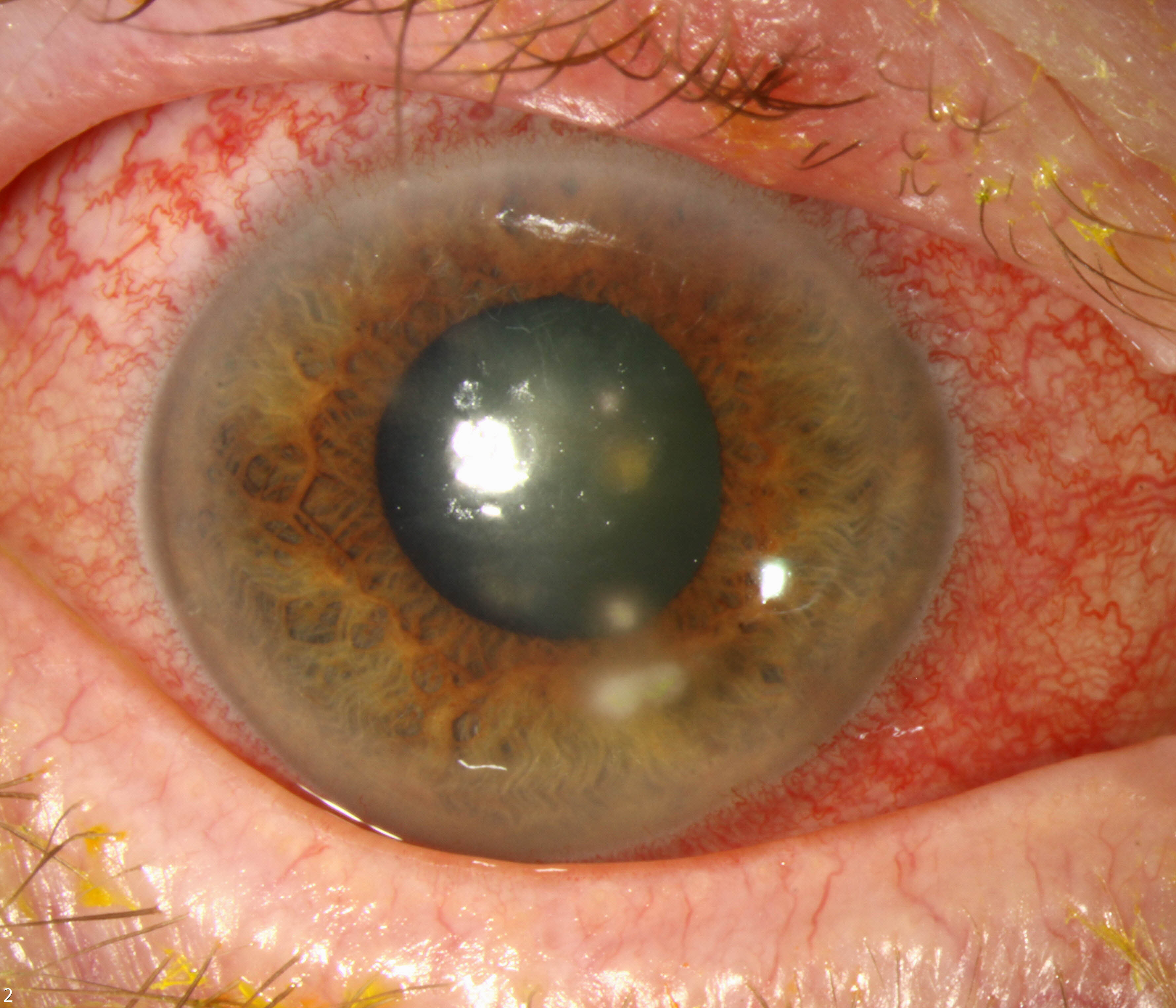 |
Those who received topical corticosteroids at initial presentation were four times more likely to develop ocular complications, with over 70% of patients who received steroids having initial presentation of endothelial keratitis or uveitis. Photo: Christine Sindt, OD. Click image to enlarge. |
Herpes zoster is a bigger concern for adults in their later years of life. One group of researchers from the University of Illinois specifically wanted to characterize the epidemiology of herpes zoster and herpes zoster ophthalmicus (HZO) to determine risk factors for developing ocular complications with HZO outbreak, as well as to report shingles vaccination frequency and HZ reactivation after subsequent vaccination. Their findings were recently published in American Journal of Ophthalmology.
The retrospective investigation included 3,283 patients with HZ who were seen from 2010 to 2021 at University of Illinois Hospital. With this cohort, mean age of onset was 52.3 years, 61.6% of subjects were women and 37% were Black. A much smaller 3.4% developed HZO, but of this number, ocular complications occurred in 36.4%, with the most common complication being corneal scarring (70%). After analysis, older age, female sex, steroids at initial visit and stromal keratitis were all found to be linked with greater odds of developing ocular complications. Of eligible populations, just 1.5% received shingles vaccination, and 43 individuals developed HZ reactivation after said vaccination.
The study authors relay in their paper that 60% of patients with HZ were over 50 in this study. Despite HZ incidence risk increasing with age, epidemiologic studies report the highest number of cases in age groups of 50 to 59 and 60 to 69; in this study, 44.5% of cases were in those aged 50 to 59. What’s more, older age in the current study was found to be associated with higher odds of ocular complication development with every one-year increase in age associated with 4% higher odds of complications. Due to this prominence amongst older individuals, the authors urge, in their AJO paper, that, “with the availability of the RZV vaccine which has efficacy of up to 90% even in individuals over age 70, ophthalmologists and other health care providers should continue to educate their patients and the general public about the importance of vaccination to prevent HZ and HZO.”
Women were found more affected than men, with HZ in women accounting for 61.6% of cases and HZO in women accounting for 56%, with women more likely to experience ocular complications as well. This may be in part due to many reasons, with one possibility being because women may have a different response to latent viral infection than men. Another possibility is that a decline in estrogen and progesterone levels with menopause may play some role in differential immune response and subsequent susceptibility to HZ.
The authors expand upon the dangers of HZ, stating that “HZ and HZO are of significant public health concern given the increasing incidence, younger age at onset and significant morbidity associated with the disease.” This is compounded with the low incidence of vaccination in this study, being less than 2% of those eligible receiving it. A potential barrier to this may be because insurance is not guaranteed to cover it, leading to lower willingness from patients.
However, with the researchers identifying certain risks for ocular complications, they believe that “as our treatment and prevention options for HZ and HZO grow, knowledge of the epidemiologic characteristics of HZ and HZO can help to target at risk populations for appropriate utilization of vaccination and treatments and prevention of disease and morbidity.”
| Click here for journal source. |
Lobo-Chan AM, Song A, Kadakia A, Mehta SD. Risk factors for the development of ocular complications in herpes zoster ophthalmicus and zoster vaccine utilization in a large, urban health system. Am J Ophthalmol. October 1, 2024. [Epub ahead of print]. |

